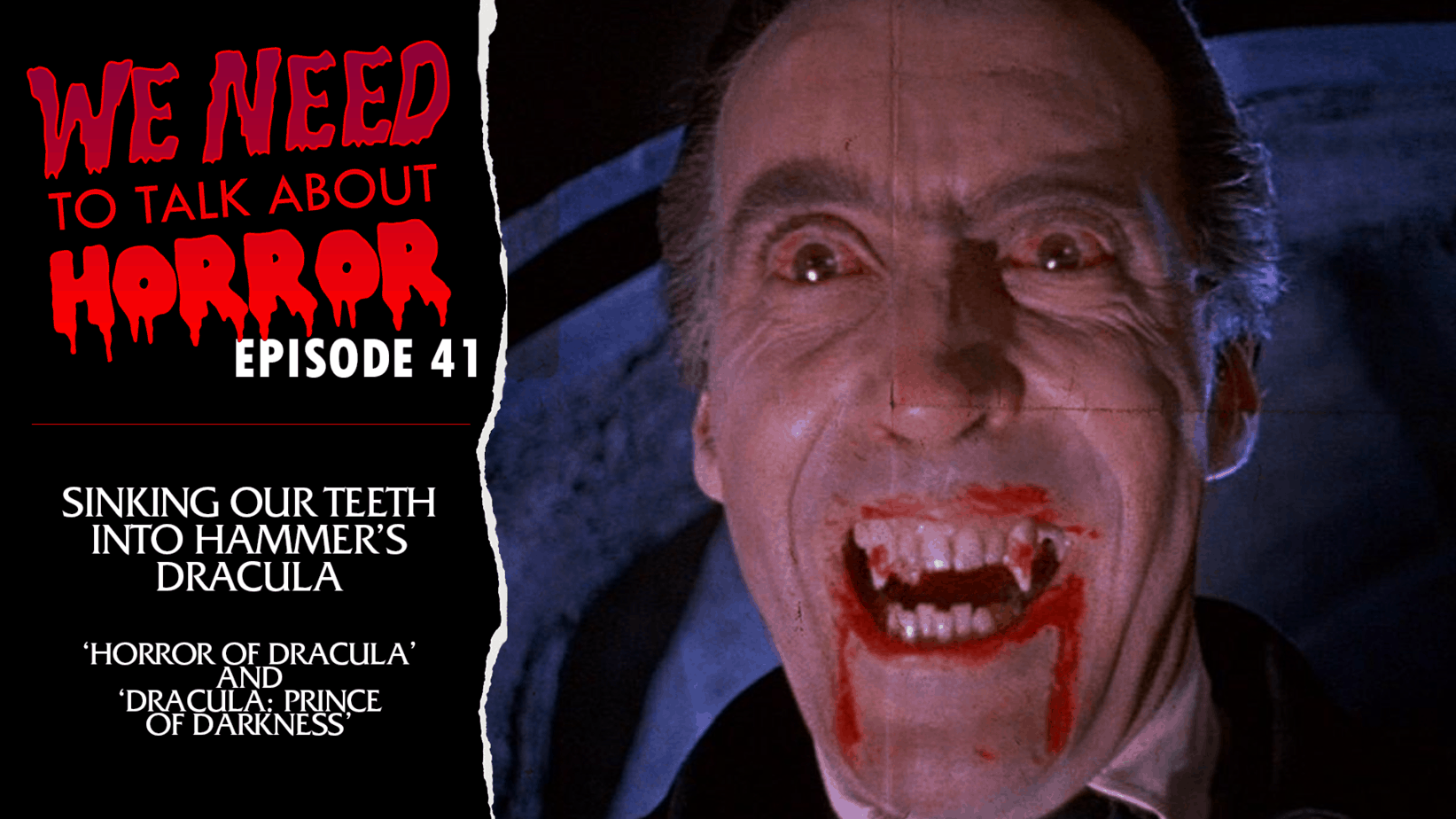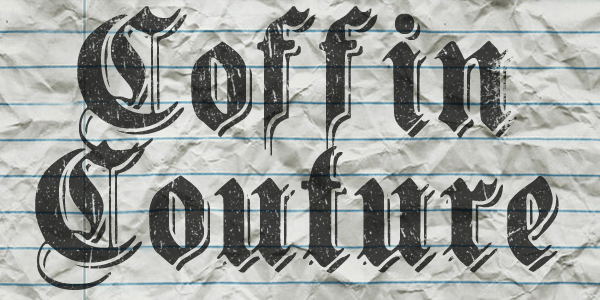Hammer Horror – Britain’s Studio of Blood: THE MUMMY
 In part three of our series on the films of Hammer Studios, I take a look at Egyptian history. As a kid, I remember taking field trips to the Art Museum and being completely fascinated by the mummy corpse and sarcophagus. I always knew it was located on the bottom level and couldn’t wait till our teacher guided us to that floor. When I got older my appreciation for the Egyptian culture dwindled. Let’s face it, mummies are not that scary. In fact, most of the times, they are quite silly. So when preparing to re-visit the third Hammer horror film in this series, The Mummy, I found myself less than enthusiastic. Then I noticed it was directed by Terence Fisher, written by Jimmy Sangster, and starred Peter Cushing and Christopher Lee – All of whom were involved in the two previous films I looked at (The Curse of Frankenstein and Horror of Dracula). After seeing those trusted names, I went into The Mummy with a new respect for the walking Egyptian dead.
In part three of our series on the films of Hammer Studios, I take a look at Egyptian history. As a kid, I remember taking field trips to the Art Museum and being completely fascinated by the mummy corpse and sarcophagus. I always knew it was located on the bottom level and couldn’t wait till our teacher guided us to that floor. When I got older my appreciation for the Egyptian culture dwindled. Let’s face it, mummies are not that scary. In fact, most of the times, they are quite silly. So when preparing to re-visit the third Hammer horror film in this series, The Mummy, I found myself less than enthusiastic. Then I noticed it was directed by Terence Fisher, written by Jimmy Sangster, and starred Peter Cushing and Christopher Lee – All of whom were involved in the two previous films I looked at (The Curse of Frankenstein and Horror of Dracula). After seeing those trusted names, I went into The Mummy with a new respect for the walking Egyptian dead.
Wrapping Up Their First Mummy
“He who robs the graves of Egypt dies,” is the warning with which Hammer’s third foray into Gothic horror is centered around. Again, reaching towards the archetypes which made Universal famous for their monsters, Hammer decided to try their hand at The Mummy. Even though it bears the same name as Universal’s original Karloff film, Hammer’s take on the subject leans more in the direction of Universal’s sequel, The Mummy’s Hand. The script, written by veteran Jimmy Sangster, is also said to be influenced by the mysterious death of Lord Caenarvon, who died following his uncovering of the tomb of Tutankhamun. Peter Cushing signed on to play the lead, one of the fateful three who uncover the tomb of Princess Ananka and her guard Kharis. For the role of Kharis (the mummy), the studio asked a gentleman who previously had experience acting behind layers of make-up, Christopher Lee (Lee had previously played the Frankenstein monster in Curse of Frankenstein). It was actually Cushing who was able to convince Terence Fisher to re-visit the director’s chair. After showing him the now famous publicity poster showcasing the mummy with a light shining through a hole in its stomach, Fisher was won over. Cushing explained to the director that they could “replicate this” by having the mummy get harpooned with a spear in a climactic battle .. again, Fisher was sold (though sadly, the exact image from the poster is never actually seen). Due to the success of Frankenstein and Dracula, a larger budget was granted to the project which is evident in the many elaborate set-pieces that are seen throughout the film. The film not only deals with the present time, 1899, but it also shows flashbacks of an archeological dig as well as flashbacks of the burial of the Egyptian princess and guard. Though the film is not as graphic or boundary-pushing as Hammer’s two previous horror endeavors, some of this blame can be attributed to censors. In the original flashbacks of ancient Egypt, the slave-girls were supposed to be seen topless, and the scene where Kharis (Lee) gets his tongue cut-off was supposed to be longer and more graphic. Though The Mummy was a huge success with audiences upon its release in 1959, the film comes across as pretty tame today, even by Hammer’s standards. The studio went on to release three more mummy films: The Curse of the Mummy’s Tomb, The Mummy’s Shroud and Blood From the Mummy’s Tomb (all of the films dealing with a different mummy being resurrected).
The Mummy (1959)
The film begins with an archeological team that has just uncovered the tomb of Princess Ananka. When one of the members of the team reads a passage from a sacred document, Ananka’s guard (Christopher Lee) is awoken and the man becomes startled to near-death by the now walking mummy. Upon their return back to England, the now crazed man is placed in an insane asylum while his son (Peter Cushing) looks after him. All the while, an Egyptian man set out for vengeance on behalf of his country, calls forth the mummy using the sacred text. With his new power, he controls the mummy to kill the three men who disturbed the Princess’s slumber.
Like I stated at the beginning, I am not the biggest fan of mummy movies. How can a “4000 year old corpse bring terror and death,” like the slogan for the film advertises? Though the film moves a little slow, it did convince me that a 4000 year old corpse has the power to choke a man to death. Due to the great performance by Christopher Lee, you believe this monster has the power to bend steel bars, walk through glass doors, and take five shots and a spear through the chest. He truly is an exciting monster when he is on screen. Besides Lee as our decayed and bandaged villain, the other highlight is the art direction of the film. I already have mentioned the expansive set design. Yet one of the ways that makes these sets standout even more is the dramatic lighting. There are many times when the Egyptian tomb as well as the swamp which Christopher Lee rises up from (and later dies in) are lit using vibrant green and purple lights. This trick creates an almost dream-like look to the film in particular scenes. I have to admit, I was a little bored with the historical flashbacks. Thankfully Terence Fisher injected some much needed excitement into the film with an iconic scene where Cushing has to fight the mummy using a shotgun and a spear. Though it certainly isn’t my favorite Hammer film, it is still fun to see a bunch of Horror icons getting together and putting their own spin on a classic character.
Again, if you are interested in seeing any of these films and other Hammer films, make sure to watch Turner Classic Movies every Friday night throughout October. You can find their schedule of films here.

![mummy[1]](https://www.destroythebrainonline.com/wp-content/uploads/2010/10/mummy1-e1286823148608.jpg)
![mummy[1]](https://www.destroythebrainonline.com/wp-content/uploads/2010/10/mummy1.gif)


